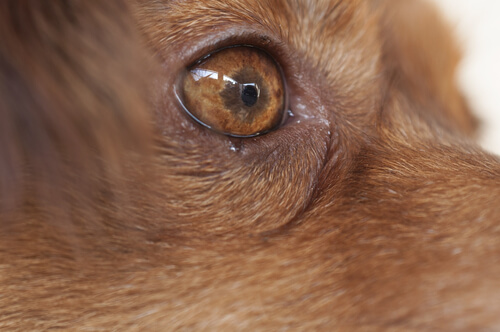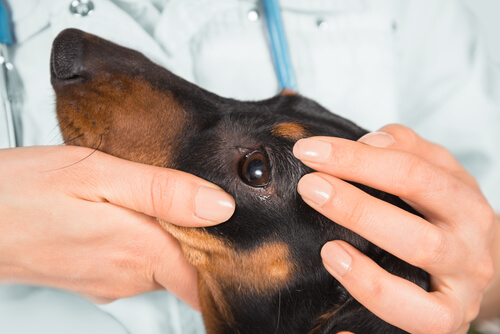Canine Ocular Thelaziosis: Causes, Symptoms and Treatment

Canine ocular thelaziosis, most common in the summer, is transmitted by fruit flies and affects mucous membranes. Today we’d like to inform you of the causes, symptoms and treatments. Read on and learn how to detect it.
Causes of Canine Ocular Thelaziosis
Also known as the “Eastern eye worm,” canine ocular thelaziosis is a parasitic disease caused by nematode worms that range from 7 to 17 millimeters in length. They hide under the eyelid membrane and the nasolacrimal ducts (tear ducts).
The transmitter of the disease is the fruit fly. It sucks the ocular secretion and then deposits its eggs. After hatching, the larvae live and grow in the conjunctival sac and membrane for three weeks.
Ocular thelaziosis is most common in dogs and cats, but it can also affect other species including wolves and foxes –even humans.
Symptoms of Canine Ocular Thelaziosis
Dogs will present with eye issues that include:
- excessive tearing
- conjunctivitis
- “crusty” eyelids
- involuntary contraction of the eyelids
- ulcers
- inflammation of the cornea
If you don’t treat canine ocular thelaziosis, it can cause serious infections and the number of worms can grow exponentially, resulting in temporary or even permanent blindness.
You may notice your dog’s eye or eyes being inflamed and secreting a white or greenish substance. The substance then attracts more flies and spreads the disease. Your dog will also act differently and try to rub his eyes because of the itching.

You must pay attention and keep an eye on any flies hanging around near your dog. That means that they are feeding on his eye secretions. If you carefully open your dog’s eyelid, you’ll see skinny white worms scurrying in front of the retina, trying to hide from the light.
Prevention and Treatment of Canine Ocular Thelaziosis
Be careful if your dog lives outdoors or near fruit trees, since that’s where fruit flies live. In addition, pay attention to organic waste that you leave out more for more than a day. It attracts insects.
We also recommend using the protective “pipettes” on your dog. They prevent fleas, ticks and other parasites like fly larvae from growing. This should be done all year round, but be extra careful in the summer. That’s when there are more infectious and bacterial diseases.
If you have small children at home—between three and six years old—be even more careful. After all, they are vulnerable to infections, especially in the summer and fall, when flies are most active.
Once you’ve identified worms in your dog’s eye, get to the vet right away to proceed with the removal of the worms. The procedure is performed manually with tweezers or sterile swabs after having been cleansed with saline.

Additionally, the vet will apply a nematocidal medication to prevent the parasite from continuing its life in another phase, especially as eggs that are practically invisible. If you treat canine ocular thelaziosis on time, the symptoms should subside after three days.
Dogs with more serious complications, such as ulcerations or keratitis, should get proper treatment once the vet is sure that there are no more worms in their eyes.